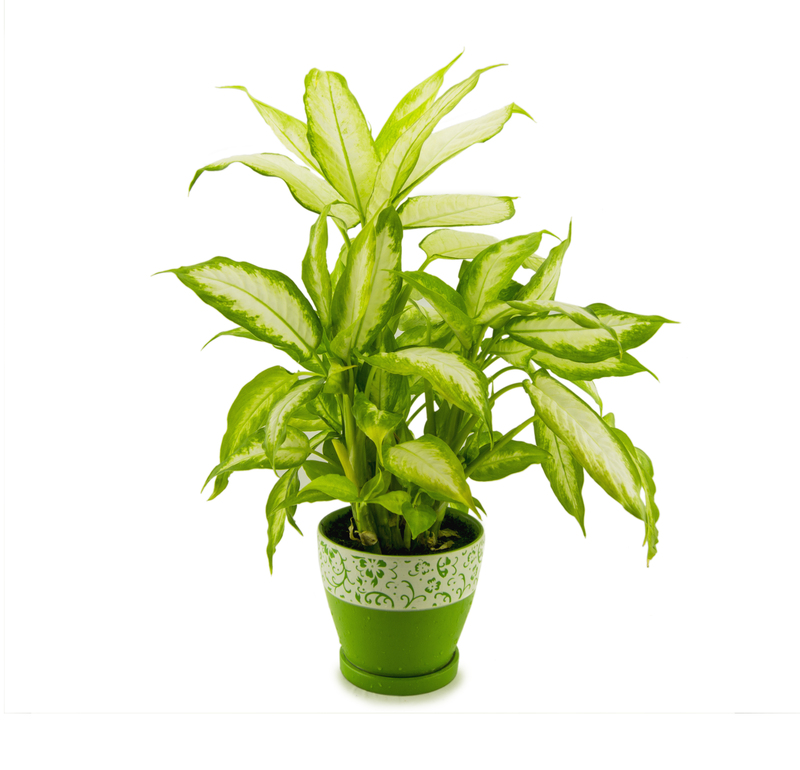The Rise of Vertical Gardening Culture
Posted on 13/06/2025
The Rise of Vertical Gardening Culture
Vertical gardening culture has rapidly transformed the urban landscape, making it possible to cultivate plants where space is restricted. This innovative gardening approach is not just a passing trend--it's an eco-friendly solution reshaping homes, offices, and communities worldwide. In this article, we explore the rise of vertical gardening culture, its origins, benefits, techniques, and how you can incorporate it into your own environment.

What Is Vertical Gardening?
At its core, vertical gardening refers to the practice of growing plants upward, using vertical surfaces instead of traditional horizontal beds. Whether attached to a wall, free-standing, or using modular systems, vertical gardens offer new avenues for plant enthusiasts and environmental advocates alike. This method allows gardeners to maximize limited space and bring greenery to places where conventional gardening may be impossible.
Brief History of Vertical Gardening
The concept of utilizing vertical space for greenery isn't entirely new. Ancient civilizations, such as the Babylonians, created the legendary Hanging Gardens of Babylon--often cited as one of the earliest examples of vertical gardens. However, the modern rise of vertical gardening solutions is driven by urbanization, innovation, and environmental concerns.
- 20th Century Innovations: Living walls and green facades emerged as aesthetic enhancements in architecture.
- Early 2000s: Pioneers like Patrick Blanc popularized the concept with public artworks and commercial installations.
- Present Day: Vertical gardening has become a global phenomenon, inspiring individuals, businesses, and municipalities to embrace greenery in new, exciting ways.
Why Vertical Gardening Culture Is Taking Root
Urbanization and Limited Space
*As cities grow denser, private green space has become a rare commodity. Vertical gardening culture provides a practical solution to this challenge, enabling residents to enjoy gardens on balconies, rooftops, and even indoor walls.* Urban dwellers no longer have to sacrifice their love of nature due to a lack of horizontal space.
Environmental Benefits
Vertical gardening offers numerous ecological advantages:
- Improved Air Quality: Plants naturally purify the air by absorbing pollutants and releasing oxygen.
- Thermal Insulation: Living walls help regulate building temperatures by providing additional insulation, reducing the need for artificial heating or cooling.
- Biodiversity: Vertical gardens can serve as micro-habitats for insects, pollinators, and birds, supporting urban ecosystems.
Aesthetic and Health Impact
Vertical gardening culture enhances urban beauty and contributes to emotional well-being. Studies show that proximity to greenery improves mood, reduces stress, and increases productivity. Moreover, vertical gardens act as living art installations, turning dull facades into vibrant, lush canvases.
Popular Types of Vertical Gardens
Today, there is a wide range of vertical gardening systems suitable for various spaces and budgets. Here are some of the most popular options:
- Living Walls: Also known as green walls, these installations use soil, hydroponic, or felt systems to support plants directly on the wall surface.
- Modular Planters: Stackable or connectable containers designed for vertical arrangement, perfect for herbs, succulents, or small vegetables.
- Pocket Gardens: Fabric pockets or felt panels attached to a structure, making it easy to add or swap plant varieties.
- Trellises and Lattices: Traditional supports for climbing plants such as beans, peas, or flowering vines.
- Pallet Gardens: Recycled wood pallets repurposed as an economical and eco-friendly growing solution.
How to Start Your Own Vertical Garden
*Interested in joining the vertical gardening culture? Here are the essential steps to set up your own thriving vertical garden:*
1. Assess Your Space
Begin by evaluating where you want to install your garden. Consider available light, wall strength, and exposure to the elements (especially if outdoors). Vertical gardens can be installed in almost any location, from patios to kitchen walls.
2. Choose the Right System
There are numerous vertical gardening systems on the market. Modular planters are great for beginners, while hydroponic panels might suit more advanced green thumbs. Recycled materials (like shoe organizers or wooden pallets) can also be creatively repurposed.
3. Select Suitable Plants
- Herbs: Basil, parsley, mint, and rosemary thrive in vertical gardens and are handy for cooking.
- Vegetables: Lettuce, spinach, strawberries, and cherry tomatoes are compact and productive.
- Ornamentals: Ferns, pothos, and succulents add beauty and air-purifying qualities.
4. Install Proper Irrigation
*Efficient watering is crucial in vertical gardening*. Drip irrigation, self-watering systems, or built-in reservoirs ensure all plants receive adequate moisture, preventing both drought and waterlogging.
5. Maintenance and Care
Prune regularly, monitor for pests, and replenish nutrients as needed. A well-tended vertical garden can last for years, providing an ongoing source of beauty, food, or both.
The Future of Vertical Gardening Culture
Technological Innovation
The future of vertical gardening lies in the integration of technology. Automated irrigation, smart sensors, and app-controlled systems are making vertical gardening culture more accessible and efficient. These innovations not only reduce manual labor but also optimize conditions for plant growth.
Urban Agriculture and Food Security
As cities expand and arable land shrinks, vertical gardening is emerging as a viable solution for urban food production. Urban farms and high-rise greenhouses can yield significant quantities of fresh produce, reducing reliance on imported food and promoting local, sustainable agriculture.
Community Impact
Many cities are now incorporating vertical gardens into public spaces, schools, and community centers. Vertical gardening culture fosters environmental education, community engagement, and a greener, cleaner urban environment.
Tips for Successful Vertical Gardening
- Light is Key: Most edible and flowering plants require at least 6 hours of sunlight. Grow lights can supplement indoors.
- Plan Your Layout: Position low-maintenance or drought-tolerant plants at the top and higher water-need plants towards the bottom.
- Use Lightweight Soil: Choose potting mixes designed for container gardens to reduce wall stress.
- Fertilize Regularly: Vertical gardens have limited soil, so regular feeding ensures vigorous growth.
- Watch for Pests: Inspect often, as tightly-packed plants may harbor pests or fungal diseases.
The Cultural and Artistic Side of Vertical Gardening
Vertical gardening is not just functional--it's a form of artistic expression. From stunning living walls that depict intricate designs to simple DIY green corners, these gardens transform the urban aesthetic landscape. Architects and interior designers increasingly incorporate vertical gardening ideas into their creations, blurring the line between nature and constructed environments.
Vertical Gardens Around the World
- Madrid, Spain: CaixaForum boasts a 24-meter high vertical garden, featuring over 250 different plant species.
- Singapore: The iconic Supertree Grove showcases futuristic vertical gardens that also function as environmental engines.
- Sydney, Australia: One Central Park's lush blades of greenery have set new standards for green building design worldwide.
Common Challenges and How to Overcome Them
Despite its many advantages, vertical gardening presents some unique challenges. Here's how to address the most common obstacles:
- Weight: Ensure walls and supports can bear the weight of soil and water. Use lightweight materials and consult with professionals for large installations.
- Water Drainage: Overhydration or poor drainage can lead to root rot. Incorporate drainage channels and monitor moisture levels.
- Plant Selection: Not all species are suitable for vertical environments. Choose hardy, shade-tolerant, or drought-resistant varieties for best results.
- Sunlight Access: Adjust plant positions regularly or use grow lights to ensure even exposure.

Vertical Gardening and Sustainable Living
*Vertical gardening culture* aligns perfectly with sustainable living initiatives. By growing food at home, individuals reduce their carbon footprint, cut down on packaging waste, and enjoy fresher, healthier produce. Furthermore, vertical gardens help mitigate urban heat, improve air quality, and support overall community resilience.
Conclusion: Vertical Gardening as a Movement
The vertical gardening revolution is more than a gardening trend--it's a solution to some of the greatest challenges of modern-day living. Whether for environmental, practical, or aesthetic reasons, the culture of growing plants vertically is flourishing in cities, suburbs, and rural communities alike. By embracing vertical gardening culture, we are not only beautifying our spaces but also nurturing a healthier, greener world for generations to come.
Frequently Asked Questions (FAQs) About Vertical Gardening Culture
-
Is vertical gardening expensive to set up?
Not necessarily. While large commercial installations can be costly, many DIY solutions use inexpensive or recycled materials, making it accessible for most budgets. -
Can I grow vegetables in a vertical garden?
Absolutely! Many leafy greens, herbs, and even small-fruit plants like cherry tomatoes thrive in vertical systems when given proper light and care. -
Do vertical gardens need a lot of maintenance?
Maintenance depends on the system and the plants you choose. Automatic irrigation and low-maintenance plants can make upkeep very easy. -
Are vertical gardens only suitable for outdoors?
No, many systems are designed for indoor use, bringing greenery and freshness into living rooms, kitchens, and workspaces. -
How do I prevent mold or water damage on walls?
Use waterproof barriers behind your vertical garden and ensure proper drainage to protect surfaces.
In summary, the rise of vertical gardening culture is bringing nature closer to urban communities, supporting sustainability, and inspiring artful living in tight spaces. Join the movement, and experience the joy of turning ordinary spaces into thriving, living masterpieces!

